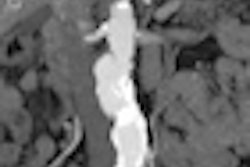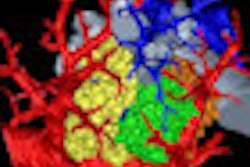Sunday, November 25 | 11:05 a.m.-11:15 a.m. | SSA19-03 | Room S403B
Researchers from the University of Michigan will present their computer-aided detection (CAD) software for detecting dangerous noncalcified plaques on coronary CT angiography (CCTA) studies.Acute myocardial infarction is often caused by vulnerable plaques that are largely noncalcified and prone to rupture. While CCTA serves as a noninvasive tool for detecting plaques and stenosis, interpretation of these studies is a challenging task and subject to large variations among radiologists, said presenter Jun Wei, PhD.
Clinical workstations offer visualization tools to assist in CCTA interpretation, but they do not actively assist radiologists in searching for suspicious noncalcified plaques. As a result, the researchers in the university's Computer-Aided Diagnosis and Image Analysis Laboratory decided to apply machine-learning methods for automated detection of noncalcified plaques.
The preliminary study demonstrated the feasibility of developing a CAD system that could accurately detect these noncalcified plaques, including those causing stenosis or positive vessel remodeling, Wei said.
"If a computerized system that can accurately detect and quantify noncalcified plaques is developed, it can help clinicians estimate the total noncalcified plaque burden and study its significance in analogy to that of the total calcium score, which may lead to improved clinical management of the vulnerable plaques," Wei said. "Improved detection and management of noncalcified plaques may reduce the risk of myocardial infarctions and will have a potential impact on millions of Americans."





















